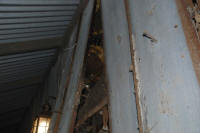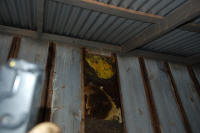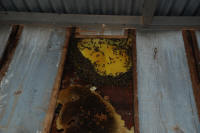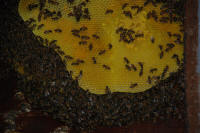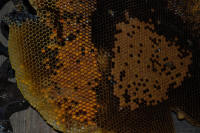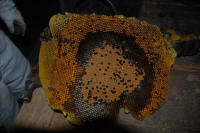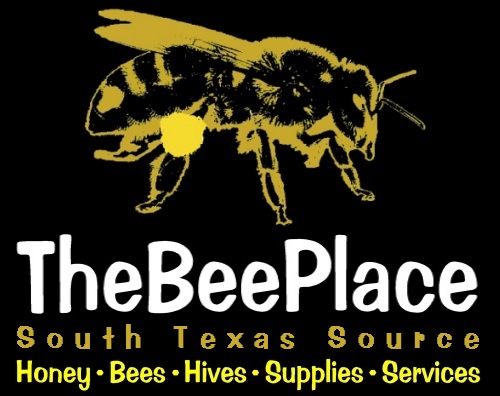 |
|
|
Contact Us
via e-mail - removal @ thebeeplace.com to schedule an appointment.
|
|
|
Kevin III |
|
![]()
Live Honey Bee Removal Process - Mesquite Creek, South Texas
Click on any image to see the larger version - use the back button to return to this page.
After carefully removing the old lumbar to expose the colony, we carefully removed the comb in sections, including the brood and the honey and place the sections of comb in special frames that fit into a Langstroth style bee hive. Many of the worker bees form clusters around the hive area, in holes and crevices on the inside of the wall. These are vacuumed into the lower section of the BeeVac and held there safely out of harms way.
Once the bulk of the bees are contained, the box is closed and the entire colony is relocated to a safe area where they will continue to do what bees like to do, pollinate blooms as they collect nectar and pollen to feed and raise their young.
![]()
![]()

